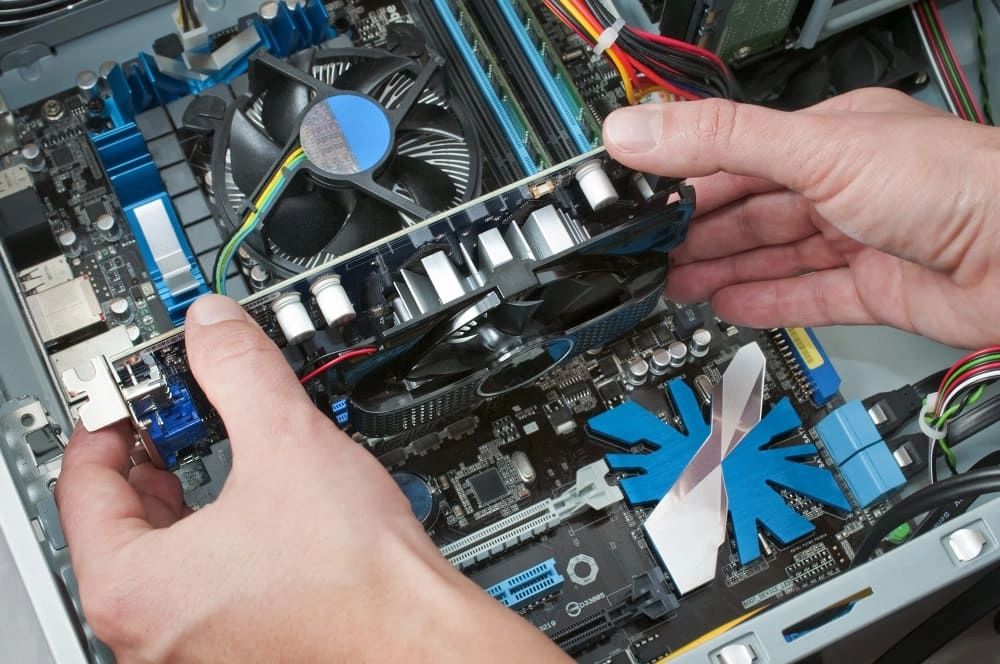A graphics card (video card, graphics board, graphics adapter) is a specialized circuit board in a computer that is responsible for reproducing graphics (graphics and video content) in high quality. Nearly every modern computer contains these components and many users mistakenly associate them exclusively with video games: they believe that to get the most out of video games, you need a computer with a good graphics card. This is true, but the graphics card is also useful for professionals who use professional photo editing applications in their work (for example, Adobe Photoshop) or create high-quality video footage.
How do you know if you need a high-performance graphics card?
Even if you think that your computer in terms of graphic load will not be used too intensively, it is still worth thinking about initially choosing a technique with a good graphics card.
The specifications state that the graphics card is responsible for ultra-fast data processing, performs a range of mathematical operations needed to display pictures and videos quickly in high quality. Typically, the graphics card has a separate dedicated memory (RAM), as well as chips used for data storage associated with the processing, storage and playback of graphics information. In addition, the computer has a specialized chip called the graphics processor, which, in turn, is optimized to work with video.
The developers of graphics-intensive software prudently design their software so that it has direct access to the GPU control and does not overload the computer's main CPU. Since the GPU uses specialized instructions designed to work specifically with the video stream, while the CPU is a general purpose tool, you are almost guaranteed to be able to increase the quality of the video you play by choosing a good video card instead of upgrading the CPU itself or the general purpose RAM.
When it comes to choosing the best graphics card manufacturer, experts usually recommend looking at chips from AMD and NVIDIA.
Built-in graphics processors and graphics cards
Instead of a graphics card built in as a separate chip, some computers have what is known as a built-in or integrated graphics processor. The term "integrated graphics processor" refers to the chip on the motherboard.
The graphics processor is most often cheaper for the manufacturer. Another advantage of such a solution is the fact that the integrated graphics card does not occupy a separate slot on the motherboard, leaving the possibility to use it for other purposes. Note that an integrated graphics adapter consumes less power and heats up less, which helps maintain a normal temperature for the operation of all computer parts inside the case using a minimum number of coolers.
Of course, built-in graphics cards also have disadvantages. The main drawback is that these chips work overload the computer's RAM, thus reducing the computer's performance. Moreover, the built-in graphics processor does not allow you to get the highest quality pictures. It is for these reasons, to work with video, including for normal rendering graphics in video games, it is more rational to use it as a separate graphics card chip. If you practically do not use Adobe Photoshop, do not mount videos and rarely play computer games with complex graphics, the built-in video card will be quite enough to view videos and photo editing at the household level.
Your graphics card requirements
Whether you need a separate graphics card or a built-in one will be sufficient depends directly on the range of tasks you do with your computer. If you mainly use programs such as Microsoft Word and Excel, send emails and surf the Internet, the built-in graphics card that comes with your computer will probably be enough.
If you have a need to perform more complex tasks, such as editing videos or photos on a professional level, or if you like to play games on your computer, you will need a more powerful video card. When in doubt, review the list of required and recommended equipment for the most powerful software you plan to use in your work. Often these computer requirements specify the minimum and recommended power of video cards (often you can even find the names of specific graphics processors) and a description of the minimum amount of video memory. By studying these requirements you will be able to decide which graphics card to choose.
Installing a video card

If your computer has a free compatible slot with the selected graphics card, you can install a separate graphics card. If your computer already has a graphics chip installed, you can usually replace it with a new, more powerful and efficient one.
It happens that one computer has a separate graphics card and a built-in graphics processor at the same time. In this case, your computer usually uses a more sophisticated and powerful graphics card by default for graphics processing, but you can change this option manually in the settings.






















































